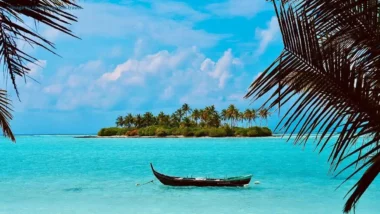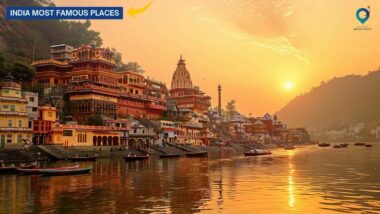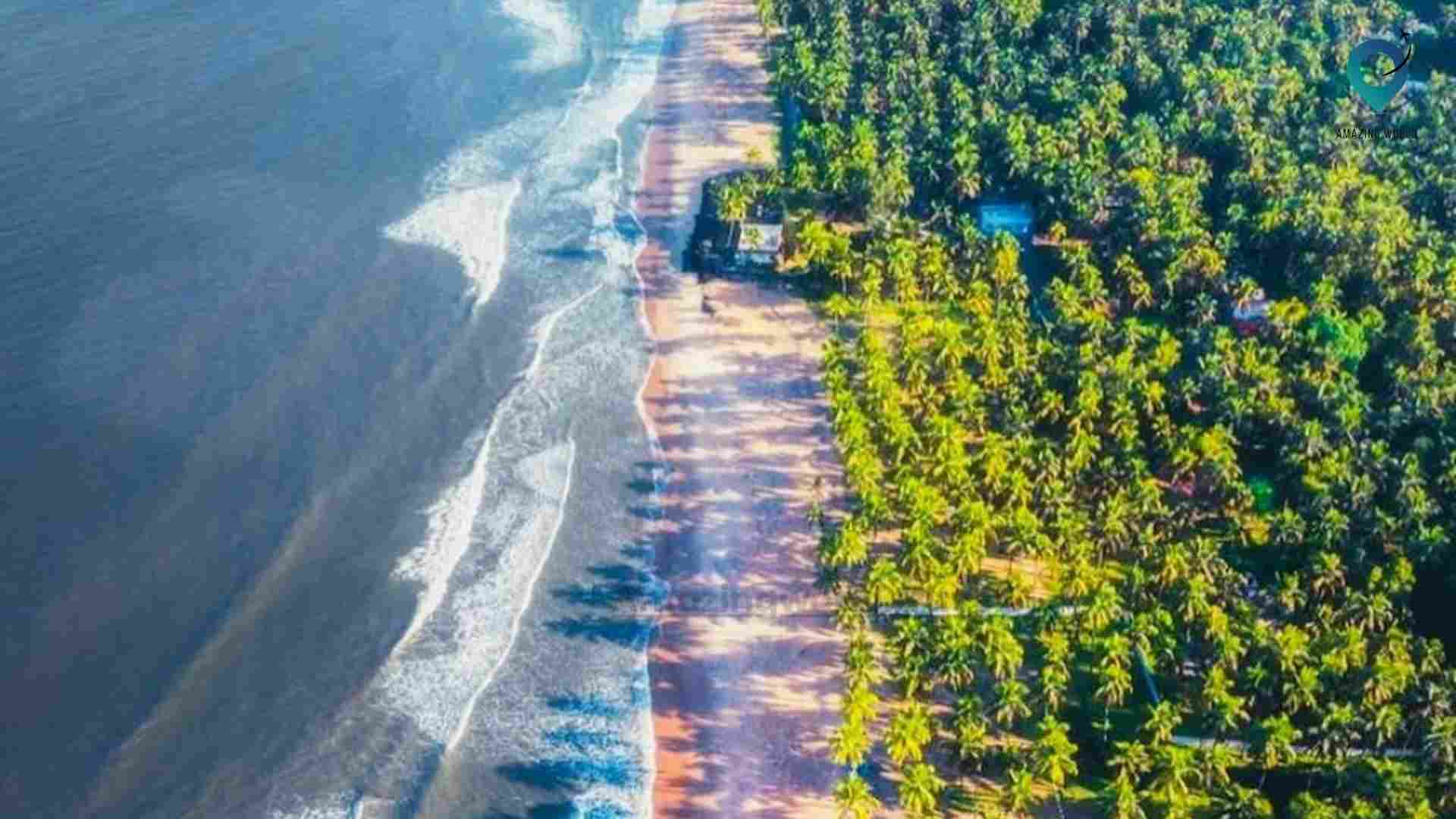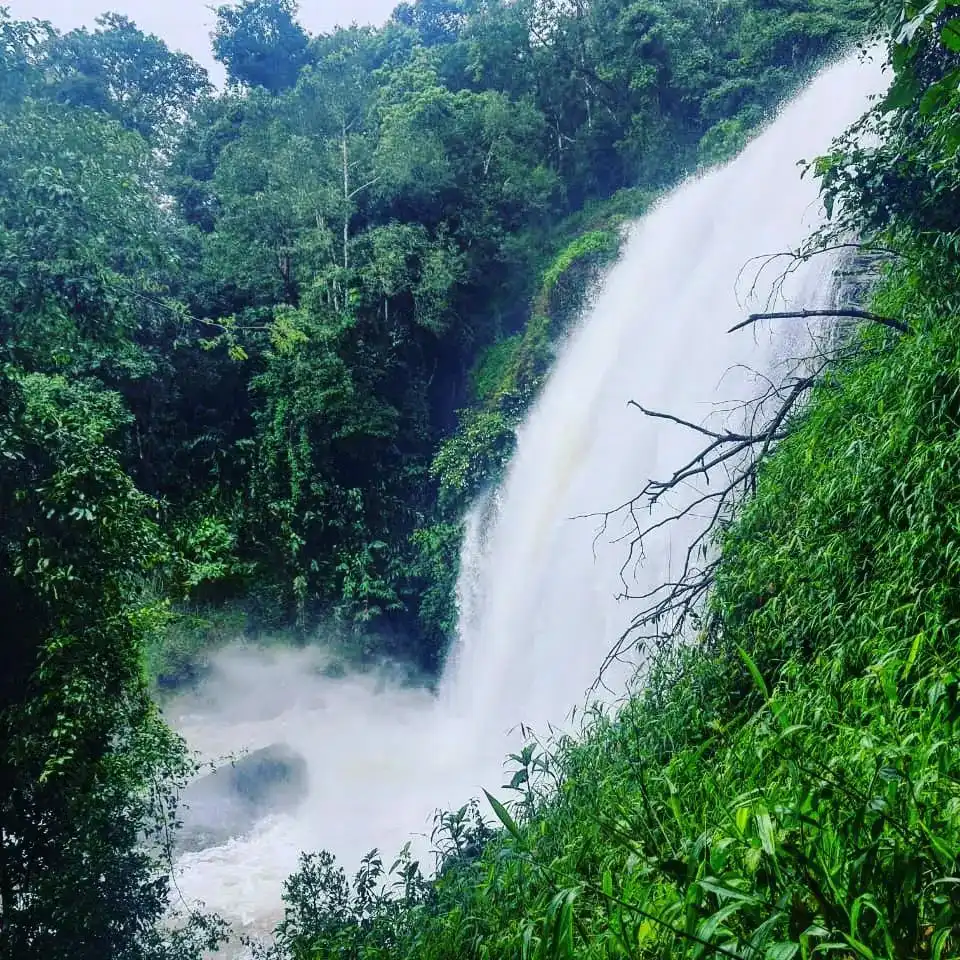World Travelers’ First Choice in 2024- The Taj Mahal in Agra

Hello my Fellow travelers
If you’re planning a trip to India’s most visited destination, the Taj Mahal in Agra, then you’re on the right blog post. The Taj Mahal is considered one of the most beautiful buildings in the world and is a UNESCO World Heritage site. It’s also referred to as the “crown of palaces” and is one of India’s most famous landmarks.
This guide is a comprehensive resource that will help you embark on an unforgettable journey and provide insights on navigating this UNESCO World Heritage Site, finding the perfect accommodations, and discovering the true essence of this awe-inspiring wonder.
During your visit to the Taj Mahal, your main focus will be on discovering the best ways to experience this magnificent structure. This guide will help you understand the intricacies of your visit and choose the ideal lodging, making sure you have a seamless and enriching adventure.
About the Taj Mahal, Agra- Its History & It’s Locations
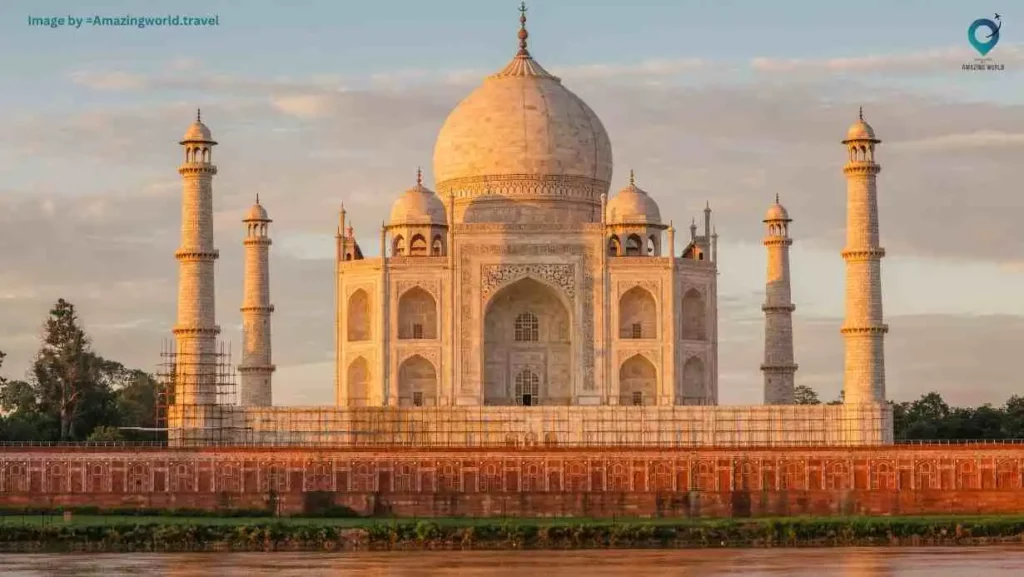
The Taj Mahal, situated in Agra, India, stands as a testament to eternal love and exquisite craftsmanship. This iconic ivory-white marble mausoleum was commissioned in 1632 by the Mughal Emperor Shah Jahan in memory of his beloved wife, Mumtaz Mahal.
Renowned for its architectural magnificence, the Taj Mahal mesmerizes visitors with its symmetrical beauty, intricate carvings, and elaborate gardens. Its location on the banks of the Yamuna River enhances its serene ambiance, inviting millions of tourists annually.
Recognized as a UNESCO World Heritage site and honored as one of the Seven Wonders of the World, the Taj Mahal remains an unparalleled destination, drawing travelers from across the globe to witness its unparalleled beauty and romantic history.
How to Get There?
Address: Dharmapuri, Forest Colony, Tajganj, Agra, Uttar Pradesh 282001, India
By Air: The nearest airport to Agra is the Pandit Deen Dayal Upadhyay Airport in Agra. However, the Indira Gandhi International Airport in Delhi is the major international airport with better connectivity. From there, you can take a flight to Agra or opt for a road or rail journey.
By Train: Agra is well-connected by rail. The city has several railway stations, with Agra tour Cantt being the main station. Trains from major cities like Delhi, Jaipur, Mumbai, and Kolkata regularly ply to Agra. From the station, you can hire a taxi or use local transportation to reach the Taj Mahal.
By Road: Agra is accessible via a network of well-maintained roads. National Highway 19 (NH19) connects Agra with Delhi, making it a convenient route for travelers. Various private buses, taxis, and car rental services operate between Agra and nearby cities. Delhi to Agra is about a 3–4-hour drive via the Yamuna Expressway.
If You are planning to visit Agra and looking for the best hotel booking from your destination, then we recommend you Find your stay with- Thehiltonholidays.com
What is the ticket price of the Taj Mahal in Agra 2024?

| Ticket Outlets | Timing | Entry Fee (Inclusive of ASI & ADA fees) | Additional Fee for Main Mausoleum Visit |
| Taj Mahal Western Gate | One Hour before Sunrise to 45 Minutes before Sunset | Foreign tourist: ₹1100 + ₹200 | ₹200 |
| SAARC and BIMSTEC Countries: ₹540 + ₹200 | ₹200 | ||
| Domestic/Indian/OCI Cardholder: ₹50 + ₹200 | ₹200 | ||
| Taj Mahal Eastern Gate | One Hour before Sunrise to 45 Minutes before Sunset | ||
| Taj Mahal Southern Gate | No Entry, Exit only |
Notes:
- Online ticket buyers receive a discount of ₹5 for Indian tickets and ₹50 for Foreigner tickets.
- children for free under 15 ages (both Domestic and Foreigner).
- An additional ₹200 will be charged for visiting the main mausoleum.
- Booking for Taj Mahal tickets can be done through the official websites asi.payumoney.com and www.asiagracircle.in for both foreign and domestic visitors.
- Cancellation policy allows for a full refund if canceled up to 24 hours before the scheduled visit.
Taj Mahal hours of operations
| Location/Gate | Opening Time | Closing Time |
| Taj Mahal | 6:00 AM | 7:00 PM |
| (Every day except Fridays) | (Every day except Fridays) | |
| Eastern Gate | One hour before sunrise | 45 minutes before sunset |
| Western Gate | One hour before sunrise | 45 minutes before sunset |
Contact Info- How do I contact for General Inquiry
| Contact Info | Details |
| Official Website | Taj Mahal Official Website |
| UPTOURS Address | Rahi Tourist Bungalow, Near Raja Mandi, Railway Station, Agra, Uttar Pradesh, India |
| UPTOURS Tel. No. | 0562-7409347000, 0562-2850120 |
| UPTOURS Email | agra@upstdc.co.in |
| UPTOURS Website | UPTOURISM |
| Office of U.P. Tourism Address | 64, Taj Road, Agra, Uttar Pradesh, India |
| Office of U.P. Tourism Tel. No. | 0562-2226431 |
| Office of U.P. Tourism Email | agrauptourism@gmail.com |
| Tourist Information Center Address | Agra Cantt Railway Station, Agra, Uttar Pradesh, India |
| Tourist Information Center Tel. No. | 0562-2421204 |
Taj Mahal Public Review- By Tripadvisors


Why do people visit the Taj Mahal?
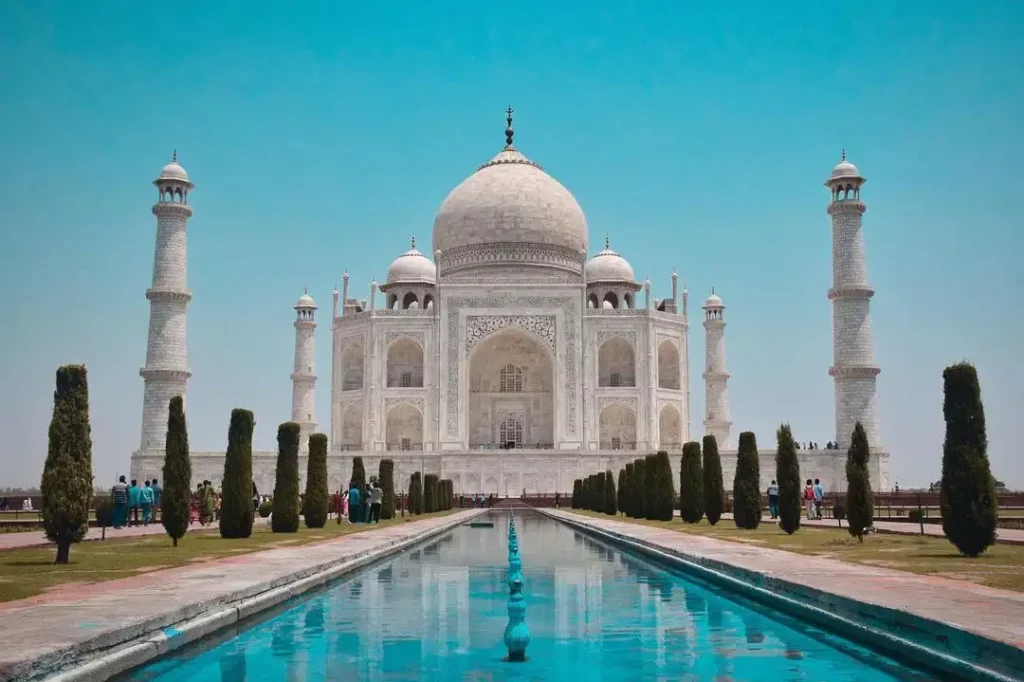
People visit the Taj Mahal for various reasons, and it holds immense significance for travelers worldwide. Some of the primary reasons why people visit the Taj Mahal include:
- Architectural Splendor: The Taj Mahal is celebrated for its unparalleled architectural beauty. Visitors are drawn to its exquisite design, perfectly symmetrical layout, intricate carvings, and the use of precious stones in its construction.
- Symbol of Love: Regarded as a symbol of eternal love, the Taj Mahal was built by Emperor Shah Jahan in memory of his beloved wife, Mumtaz Mahal. The story behind its creation adds to its allure, capturing the imagination of romantics and history enthusiasts.
- Historical Significance: As a UNESCO World Heritage Site and one of the Seven Wonders of the World, the Taj Mahal holds immense historical importance. It represents the rich cultural heritage of India and the architectural brilliance of the Mughal era.
- Cultural Experience: Visitors come to experience Indian culture, craftsmanship, and the ambiance surrounding the monument. The gardens, reflecting pools, and the serene Yamuna River add to the overall cultural experience.
- Photography and Art: Photographers and artists are captivated by the Taj Mahal’s photogenic qualities. Its stunning beauty, especially during sunrise and sunset, makes it a favorite subject for photographers and artists alike.
- Spiritual and Religious Significance: For some, visiting the Taj Mahal is a spiritual journey. It serves as a mausoleum and holds religious significance for many, attracting visitors seeking spiritual experiences.
- Tourism and Travel: The Taj Mahal is a prominent destination in India’s tourism circuit, attracting millions of domestic and international tourists annually. Travelers often include it as a must-visit site on their itineraries when exploring India.
The Taj Mahal’s timeless beauty, historical significance, romantic narrative, and cultural importance contribute to its universal appeal, making it a bucket-list destination for travelers worldwide.
Which Entry is best for the Taj Mahal?
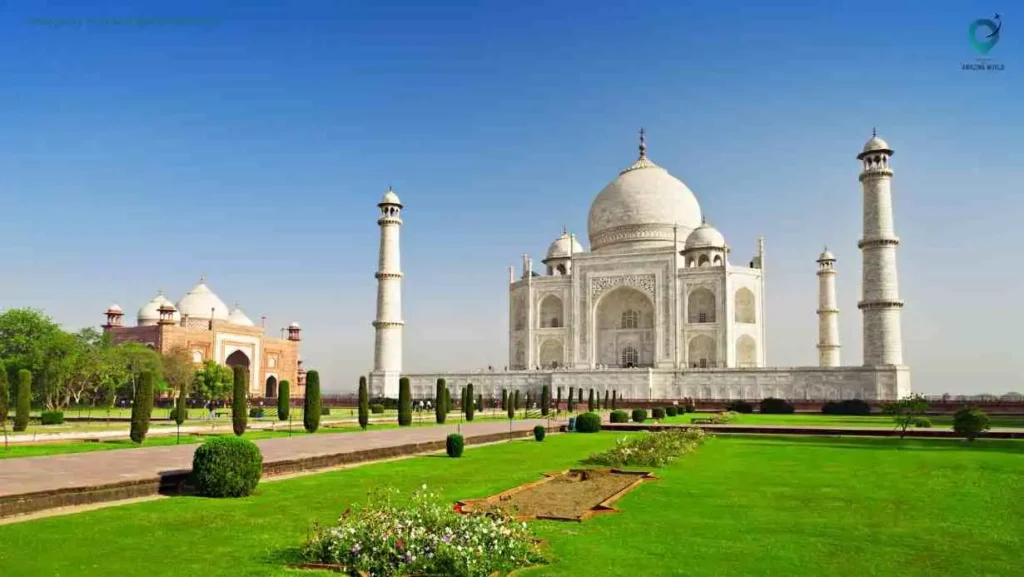
Choosing the best entry gate for the Taj Mahal often depends on various factors such as convenience, crowd levels, and proximity to your accommodation. Both the Eastern and Western gates have their advantages:
- Eastern Gate:
- Advantages: This gate is closer to the Taj Ganj area and is generally less crowded compared to the Western Gate. It is convenient for those staying in accommodations near the Taj East Gate Road.
- Note: Visitors approaching from the Eastern Gate get a stunning view of the Taj Mahal from across the Yamuna River. However, they need to cross the river to reach the monument.
- Western Gate:
- Advantages: The Western Gate has easy accessibility for those coming from the city center or the Agra Fort. It’s often the more popular entrance, but it can get crowded, especially during peak tourist seasons.
- Note: This gate leads directly into the gardens of the Taj Mahal and offers the iconic view of the mausoleum as visitors enter.
Ultimately, the choice between the Eastern and Western gates comes down to personal preference, convenience, and possibly the location of your accommodation in Agra. Both gates provide access to the Taj Mahal and offer unique views and experiences. Visitors should consider factors like crowd levels and ease of access when deciding which gate to use for their visit.
Activity and Things to Do

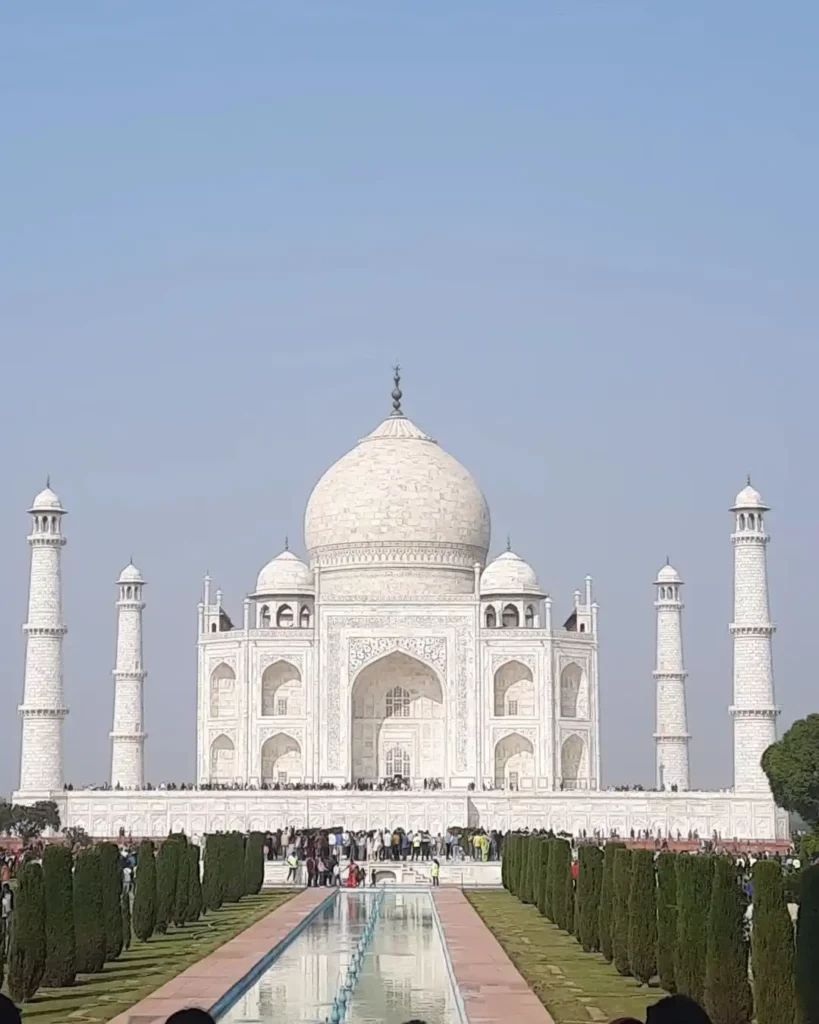

When visiting the Taj Mahal in Agra, there are several activities and things to do to enhance your experience and make the most of your trip. Here’s a list of activities and things you can do when visiting this iconic monument:
- Explore the Taj Mahal: Take your time to admire the beauty of the Taj Mahal. Walk around the gardens, appreciate the intricate details of the marble architecture, and learn about its history and significance.
- Photography: Capture the mesmerizing beauty of the Taj Mahal during different times of the day. Sunrise and sunset offer spectacular lighting, creating breathtaking photo opportunities.
- Visit the Main Mausoleum: Purchase tickets to enter the main mausoleum (additional fee required). Inside, you can see the cenotaphs of Shah Jahan and Mumtaz Mahal and experience the exquisite interior decoration.
- Enjoy the Gardens: Spend some time strolling through the Charbagh gardens, laid out in a quadrilateral pattern with fountains and pathways. These gardens offer serene views and great photo spots.
- Learn at the Visitor Center: Visit the Taj Mahal’s Visitor Center to gain insights into its history, architecture, and preservation efforts. It often features exhibitions and multimedia presentations.
- River View: Get a different perspective by viewing the Taj Mahal from across the Yamuna River. Mehtab Bagh, a garden complex opposite the monument, offers excellent views.
- Explore Agra Fort: After visiting the Taj Mahal, consider exploring Agra Fort, another UNESCO World Heritage Site in Agra. It’s a short distance away and offers stunning views of the Taj Mahal from certain vantage points.
- Shopping: Visit local markets in Agra for souvenirs and handicrafts. You’ll find marble crafts, miniature replicas of the Taj Mahal, and other local specialties.
- Cultural Shows: Look for cultural shows or events that showcase Indian music, dance, and art. Some venues in Agra organize evening programs, providing a glimpse into the region’s culture.
- Cuisine: Enjoy local delicacies. Agra is famous for its cuisine, especially the Mughlai dishes. Don’t miss out on trying Agra’s famous sweets, such as petha.
These activities can help you immerse yourself in the history, beauty, and culture surrounding the Taj Mahal and make your visit to Agra a memorable one.
Best Taj Mahal Instagram Photos
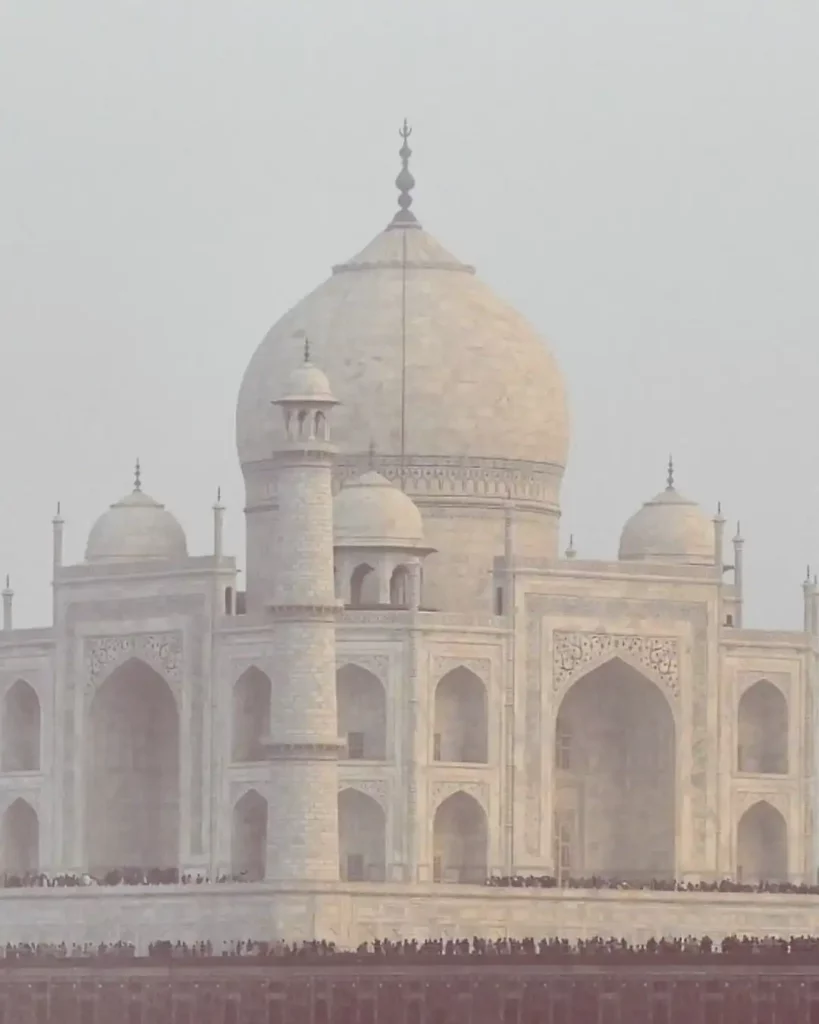
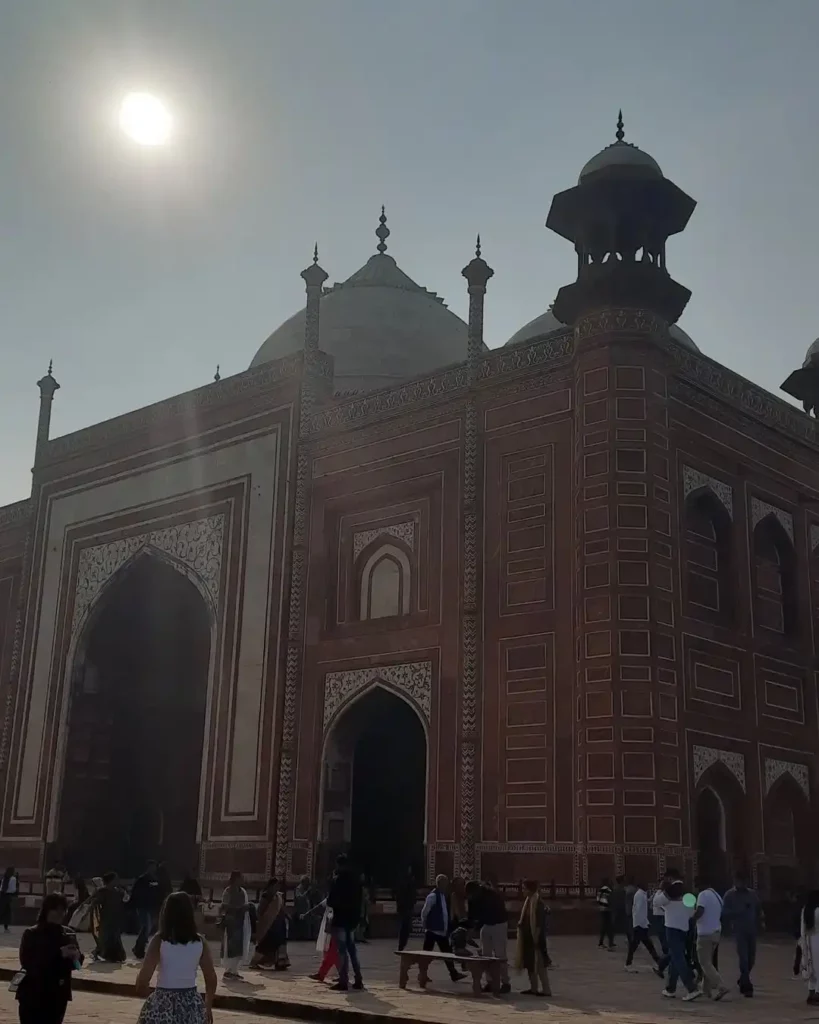
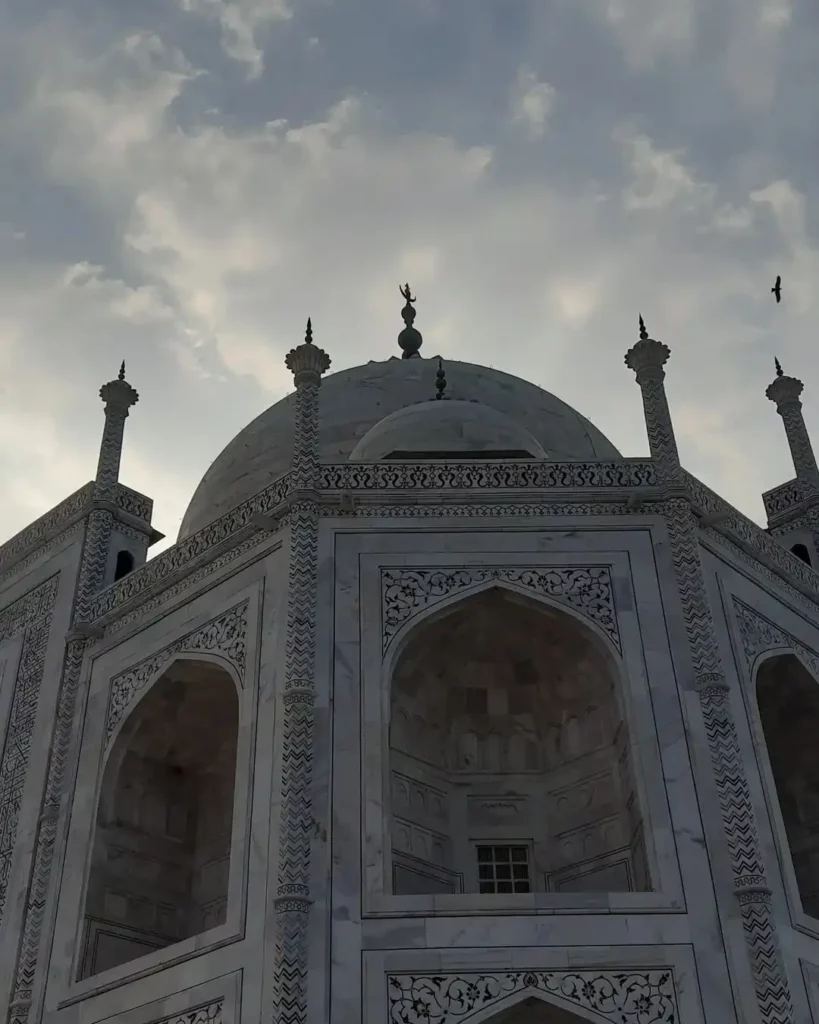
Best Budget-Friendly and Luxury Hotels to Stay in Agra?
Budget-Friendly Hotels:
- Hotel Sidhartha: Situated near the Taj Mahal, it offers comfortable rooms at affordable prices and is known for its friendly service.
- Hotel Atulyaa Taj: Located close to the Taj Mahal, this hotel provides decent rooms with good amenities at budget-friendly rates.
- Hotel Taj Resorts: Offers a comfortable stay and is conveniently located near the Taj Mahal. It provides a budget-friendly option with clean rooms.
- Hotel Amar: Situated near the Taj Mahal, Hotel Amar provides decent accommodation at reasonable prices with essential amenities.
Luxury Hotels:
- Radisson Blu Agra Taj East Gate: Known for its luxurious ambiance and excellent service, this hotel offers a premium stay experience near the Taj Mahal.
- Four Points by Sheraton Agra: A luxurious hotel with modern amenities, it provides a comfortable and lavish stay experience for travelers.
- Crystal Sarovar Premiere, Agra: This hotel offers luxury rooms, excellent service, and a convenient location near the Taj Mahal.
- Howard Plaza The Fern – An Ecotel Hotel, Agra: Known for its eco-friendly practices, this luxury hotel provides a lavish stay experience with top-notch facilities.
What are the Best Agra Foods to Eat
Agra, known for its rich Mughlai cuisine, offers a delightful array of delectable dishes that reflect the city’s culinary heritage. When in Agra, here are some of the best local foods you should try:
- Tajik Cuisine: Agra is renowned for its Mughlai cuisine, and you can’t miss the iconic dishes like Tajik. It’s a rich and flavorful meat dish cooked with aromatic spices, nuts, and yogurt.
- Petha: Agra is famous for its sweet, translucent candy called Petha. It comes in various flavors like plain, saffron, mango, and more. It’s a must-try local sweet.
- Bedai and Jalebi: This is a popular breakfast choice in Agra. Bedai is a savory fried bread often served with spicy potato curry, and it’s paired perfectly with crispy Jalebi, a sweet and syrupy dessert.
- Mughlai Dishes: Indulge in rich and creamy Mughlai specialties like Chicken Korma, Chicken Tikka, Paneer Tikka, and Mutton Biryani. These dishes are known for their aromatic spices and flavorful gravies.
- Dalmoth: It’s a savory snack made of lentils, nuts, spices, and besan (gram flour). It’s crunchy and makes for a perfect accompaniment with tea or as a snack.
- Paratha with Makhan (Butter): Agra serves delicious stuffed Parathas, especially Aloo Paratha (stuffed with mashed potatoes) or Gobi Paratha (stuffed with cauliflower), served with a dollop of fresh butter.
- Chaats: Don’t miss the vibrant street food scene in Agra offering various chaats like Pani Puri, Aloo Tikki, Papdi Chaat, and Dahi Puri. These are flavorful and spicy snacks loved by locals and visitors alike.
- Agra Ka Mitha Paan: After your meal, try the Paan (betel leaf) available at local paan shops. The Agra Ka Mitha Paan is a sweet version filled with various ingredients like sweetened fennel seeds, rose petals, and gulkand.
How Should You Dress for the Taj Mahal?
When visiting the Taj Mahal, it’s advisable to dress comfortably while also respecting the cultural significance of the site. Here are some suggestions on how to dress for a visit to the Taj Mahal:
- Modest Clothing: Agra can have hot weather, especially during summer, so lightweight and breathable clothing are recommended. However, to respect the cultural norms and the sanctity of the monument, it’s advisable to wear modest clothing.
- Covered Shoulders and Knees: Both men and women should consider clothing that covers the shoulders and knees as a sign of respect when visiting the Taj Mahal. Avoid wearing revealing or tight-fitting clothes.
- Comfortable Footwear: The monument premises involve a fair amount of walking, so comfortable walking shoes or sandals are advisable to navigate the area comfortably. Avoid high heels or uncomfortable shoes.
- Layers or Scarves: If visiting during cooler months or mornings/evenings, carrying a light shawl, scarf, or jacket is a good idea to keep warm as temperatures might drop, especially during winter.
- Sun Protection: Agra can be sunny, so wearing a hat, sunglasses, and sunscreen is recommended to protect yourself from the sun’s rays.
- Avoiding Jewelry and Accessories: Consider leaving valuable or excessive jewelry/accessories behind to avoid any inconvenience or loss during your visit.
- Be Respectful: Remember that the Taj Mahal is a revered site. Being mindful of dressing modestly and respectfully not only aligns with local cultural norms but also shows reverence for the monument’s significance.
It’s essential to strike a balance between comfort and cultural respect when choosing attire for visiting the Taj Mahal. By dressing modestly and comfortably, you can fully enjoy your visit while respecting the heritage and cultural significance of this iconic monument.
Other Near Tourist Attractions at the Agra
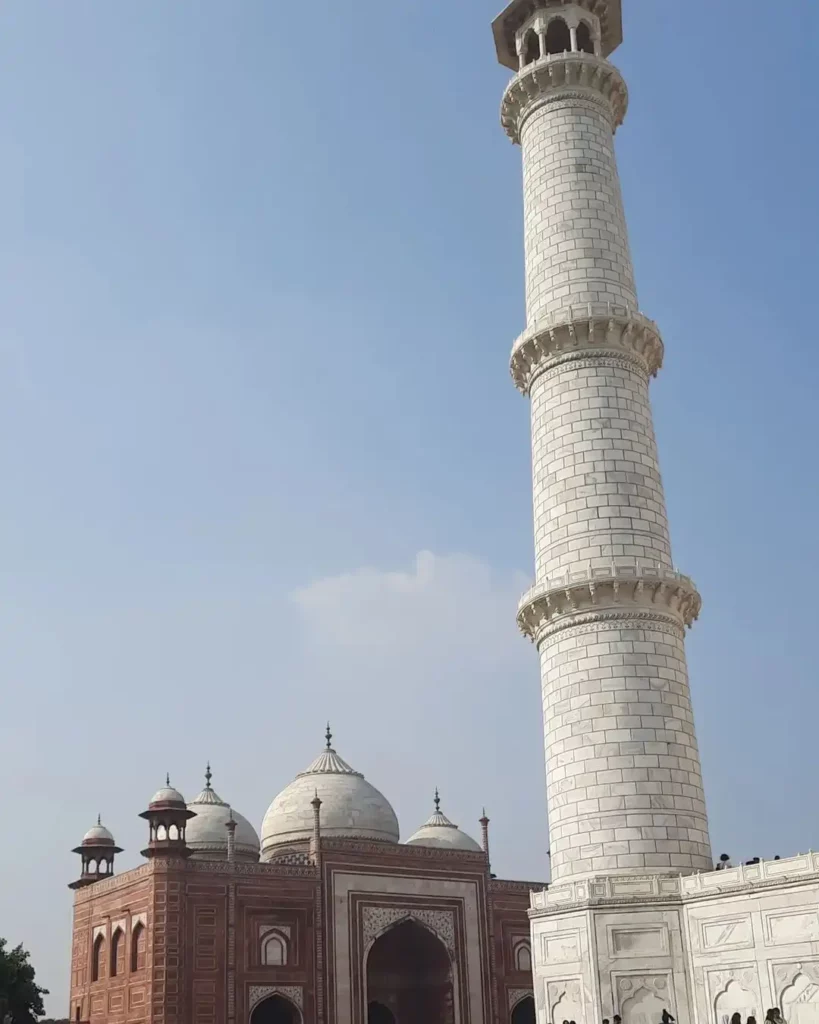
Agra, apart from being famous for the Taj Mahal, offers several other tourist attractions that visitors can explore. Here are some notable places to visit in Agra, aside from the Taj Mahal:
- Agra Fort (Red Fort): A UNESCO World Heritage Site, Agra Fort is a historic fort built by Emperor Akbar. It showcases impressive Mughal architecture and served as the main residence of the Mughal emperors.
- Fatehpur Sikri: Located around 40 kilometers from Agra, Fatehpur Sikri is another UNESCO World Heritage Site. This historical city was founded by Emperor Akbar and served as the capital of the Mughal Empire for a brief period. The site includes palaces, mosques, and other architectural marvels.
- Itmad-ud-Daula (Baby Taj): Often referred to as the “Baby Taj,” Itmad-ud-Daula is a mausoleum made of white marble and is considered a precursor to the Taj Mahal. It’s known for its intricate marble inlay work and beautiful gardens.
- Mehtab Bagh: This garden complex is situated across the Yamuna River from the Taj Mahal and offers stunning views of the monument. It’s a great spot for photography and a peaceful retreat.
- Tomb of Akbar the Great: Located in Sikandra, around 13 kilometers from Agra, this grand mausoleum houses the tomb of Emperor Akbar and features a blend of Persian, Hindu, and Islamic architectural styles.
- Jama Masjid: Agra’s largest mosque, Jama Masjid, is known for its impressive architecture and intricate designs. It’s a significant religious and historical site in the city.
- Mughal Heritage Walk: This guided walk takes you through the lesser-known parts of Agra, exploring local markets, ancient temples, and hidden alleys, providing insights into the city’s heritage and culture.
When planning your visit to these attractions, it’s advisable to check the official website mentioned (https://www.tajmahal.gov.in/ticketing.aspx) for ticket bookings, entry fees, timings, and any additional information regarding these sites to make the most of your trip to Agra.
Tips for Visiting the Taj Mahal
| Tips for Visiting the Taj Mahal |
| 1. Understand seasonal conditions |
| 2. Avoid visiting on Fridays |
| 3. Gain knowledge about the monument |
| 4. Leave restricted items at home |
| 5. Decide on entry gate beforehand |
| 6. Dress appropriately and respectfully |
| 7. Arrive early to avoid crowds |
| 8. Familiarize with ticket inclusions |
| 9. Choose guides carefully |
| 10. Be prepared for security checks |
| 11. Capture photos early for better lighting |
| 12. Explore less crowded spots for photos |
| 13. Appreciate details up close |
| 14. Be ready for photo requests |
| 15. Consider local tipping customs |
| 16. Explore other significant sites nearby |
| 17. Consider a night tour during a full moon |
Conclusion.
Visiting the Taj Mahal in Agra is an experience filled with awe-inspiring beauty, rich history, and cultural significance. From understanding the best times to visit and dressing appropriately to exploring the monument’s intricacies and surrounding attractions, there are various elements to consider for a fulfilling trip.
To make the most of your visit, it’s crucial to plan ahead, respect local customs, and be mindful of the monument’s significance. Whether it’s capturing the perfect photo, appreciating the architectural marvel, or immersing yourself in the Mughal heritage, each aspect adds depth to the visit.
The Taj Mahal stands not only as a testament to eternal love but also as a symbol of architectural brilliance, drawing visitors from across the globe. By following tips such as arriving early, learning about the monument’s history, and exploring beyond the main mausoleum, visitors can create lasting memories and gain a deeper appreciation for this iconic wonder.
Ultimately, a visit to the Taj Mahal is not just about witnessing a breathtaking monument but also about experiencing the spirit of art, love, and history encapsulated within its marble walls, making it a cherished destination for travelers worldwide.
How much did you like Our Detailed The Ultimate Taj Mahal in Agra Guide: How to Visit, Choosing Hotels & Review: Your Ultimate Guide? Review Also, please share these Blogs with your friends on social media.
Recommended
Taj-Mahal FAQ’s
Where is the Taj Mahal located?
The Taj Mahal is located in Agra, Uttar Pradesh, India, on the banks of the Yamuna River.
What are the visiting hours of the Taj Mahal?
The Taj Mahal is open to visitors from sunrise to sunset, except on Fridays when it's closed to the public for general viewing.
How much does it cost to visit the Taj Mahal?
The entry fee varies for different categories of visitors: Foreign tourists, SAARC/BIMSTEC citizens, and domestic/Indian visitors. Additional fees apply for visiting the main mausoleum.
Are there any specific dress codes to follow when visiting the Taj Mahal?
Visitors are advised to dress modestly and respectfully. Clothing that covers the shoulders and knees is recommended out of respect for the cultural significance of the monument.
Which gate should I use to enter the Taj Mahal?
There are Eastern and Western gates for entry. Visitors can choose based on their location or convenience. Both gates offer access to the monument and have their unique views and experiences.
Can I take photographs inside the Taj Mahal?
Photography is allowed in most areas outside the main mausoleum. However, photography might be restricted inside certain sections or the main chamber.
What are some other attractions to visit near the Taj Mahal?
Nearby attractions include Agra Fort, Fatehpur Sikri, Itmad-ud-Daula (Baby Taj), and Mehtab Bagh, offering additional historical and architectural marvels.
Are guided tours available at the Taj Mahal?
Yes, guided tours are available both through official guides provided at the site and through authorized tour operators, offering insights into the monument's history and significance.
Are there any restrictions on items that I can bring inside the Taj Mahal?
Certain items like tripods, large bags, food, and other restricted items might not be allowed inside. It's advisable to check the list of prohibited items before your visit.

Meet David Hoper, a passionate travel Blog writer with 7+ years of experience in travel content. Through his exemplary storytelling and engaging narratives, he shares his experiences and brings destinations to life. With a keen eye for detail and a love for exploration, he has cultivated a diverse portfolio of travel blogs that inspire and inform readers worldwide.




